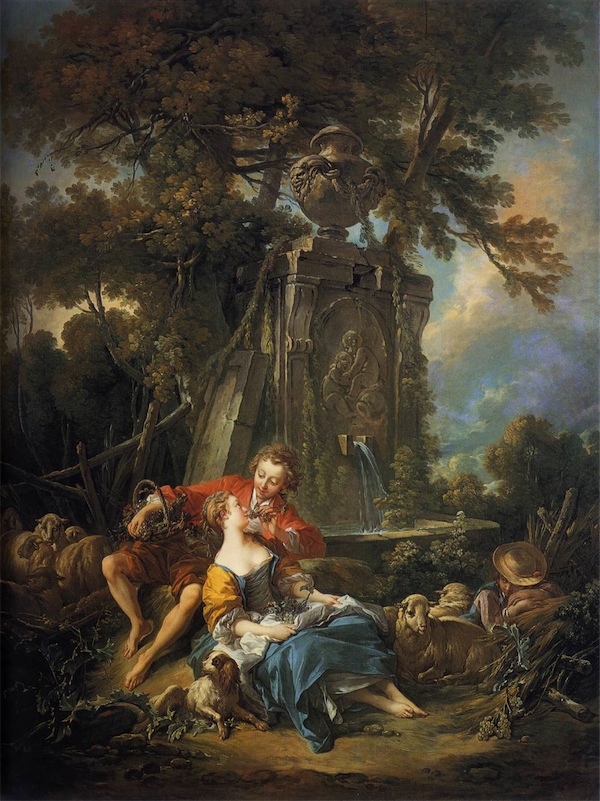
O Autumn, laden with fruit, and stainèd
With the blood of the grape, pass not, but sit
Beneath my shady roof; there thou may’st rest,
And tune thy jolly voice to my fresh pipe,
And all the daughters of the year shall dance!
Sing now the lusty song of fruits and flowers.
The narrow bud opens her beauties to
The sun, and love runs in her thrilling veins;
Blossoms hang round the brows of Morning, and
Flourish down the bright cheek of modest Eve,
Till clust’ring Summer breaks forth into singing,
And feather’d clouds strew flowers round her head.
The spirits of the air live on the smells
Of fruit; and Joy, with pinions light, roves round
The gardens, or sits singing in the trees.’
Thus sang the jolly Autumn as he sat;
Then rose, girded himself, and o’er the bleak
Hills fled from our sight; but left his golden load.
—William Blake, To Autumn from: Poetical Sketches (1783)
Listen to the music of autumnal dusk: Wilhelm Friedemann Bach’s Sinfonia in D Minor, F. 25, here in a performance by Concerto Cologne. This work was, according to court records, performed at a birthday celebration for Frederick the Great in January 1758 and was probably composed sometime late in 1757. Its two-movement structure, first an adagio and then a fugue, reminds strongly of the prelude and fugue style of Friedemann’s father, Johann Sebastian, who was long supposed the work’s author. Yet it also shows flashes of South Italian (Neapolitan) style and is composed for an orchestra associated with the Dresden court. The opening theme is restrained and introspective and this fades after some 54 bars (roughly four minutes) to a fugue which is clearly more joyful and optimistic. It’s a good example of Friedemann’s use of winds as a vehicle for introspection. This sinfonia has long been associated with autumnal change and nightfall.


